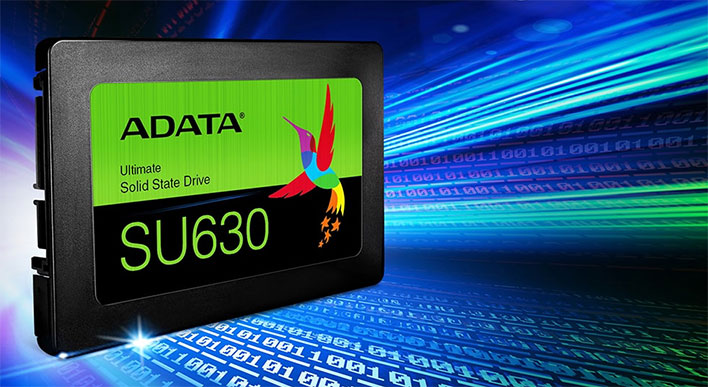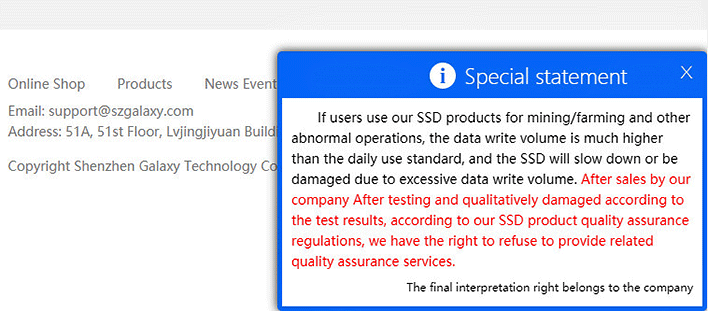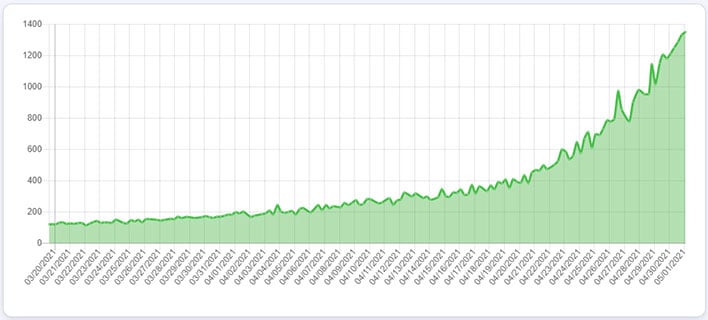Chia Crypto Mining Surges Over 1 Exabyte As SSD Sales Soar And OEMs Void Warranties

Cryptocurrency mining has been a bane on gamers hoping to score a graphics card at fair market value, but just wait until the storage market dries up, too. Perhaps (hopefully) it will not happen. It depends on the long term impact of Chia, a type of cryptocurrency that is mined with unused storage space instead of GPUs and dedicated ASIC hardware. Should you be worried?
The early numbers are not encouraging. Chia has been around since 2018, but on Monday (May 3, 2021), it will be available for public trading. This has led to increased interest in Chia in recent weeks—so much, in fact, that Chia's total storage capacity has grown nearly sixfold since the beginning of April, going from 190.2 petabytes to 1.35 exabytes.
Have a look at how it has trended over time...
As you can see, Chia's sharp ascension in storage capacity really began a couple of weeks ago. Miners are obviously hopeful Chia will be the next big thing in the world of cryptocurrency, and are trying to dig up as much of it as possible in anticipation of it being officially listed for public trading next week. We saw what happened with Bitcoin and Ethereum, after all.
SSD Sales Skyrocket As Chia Takes Off, Prompting Warranty Warnings
What's the tie-in with storage, though? Chia is a different type of cryptocurrency than most, in that it uses a proof of space and time model, which essentially means it stores a bunch of cryptographic numbers on hard disk drives (HDDs) and solid state drives (SSDs). These are called plots.
Here's where things get even more interesting. You would think HDDs would be better suited for this, because the cells on SSDs can only be written to so many times before they wear out. However, speed apparently matters, and as we know, SSDs are much faster than HDDs (see our Samsung 980 Pro review for an example of how fast today's SSDs have become).
"Plotting requires an amount of space that is greater than the final output plot file, known as temporary space. The amount of space required changes depending on the k size that you are plotting.
For example a k32 plot is around 100GB in size but requires around 356GB of temporary space to create.
The location of temporary space is an important decision when plotting. You ideally want the temporary space to be located on a storage medium that is as fast as possible—NVMe based storage is often recommended," Chia explains.
According to a paywalled DigiTimes report, storage maker Adata saw a 500 percent increase in sales during the month of April. There is little doubt the rise in Chia mining is at least partially the reason, if not the primary driving factor.

This has led to at least one storage maker to put out a notice saying it reserves the right to void a customer's SSD warranty if it finds they had been using the drive to mine Chia.
"If users use our SSD products for mining/farming and other abnormal operations, the data write volume is much higher than the daily use standard, and the SSD will slow down or be damaged tu to excessive data write volume," Galax stated (Google Translate).
The translated text gets a muddy after that, but the message is still clear—Galax intends to test any SSDs it receives as part of a warranty claim to see if they had been used to mine Chia. If so, Galax will not honor the warranty, on the basis that the damage false out of bounds of normal use.
It will be interesting to see if other SSD makers adopt a similar policy. That is, if Chia continues to be popular over time. It is not unusual for new cryptocurrencies to see a surge at the beginning, before interest wanes. We'll have to wait and see what happens.


